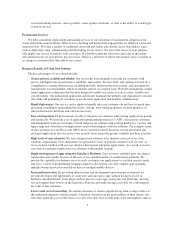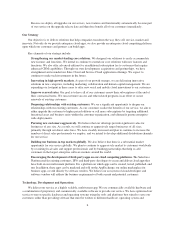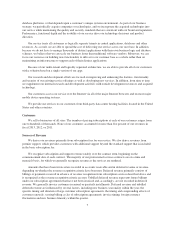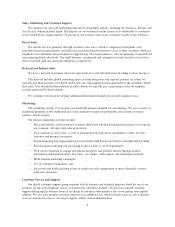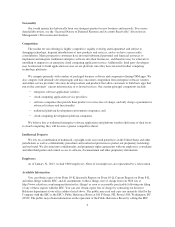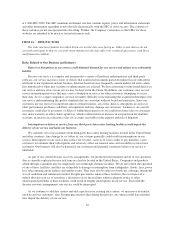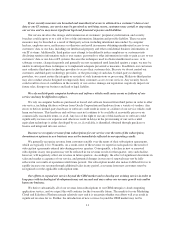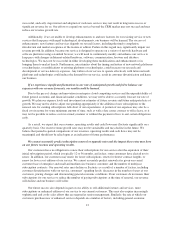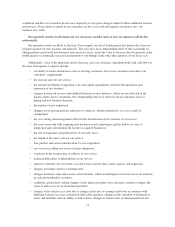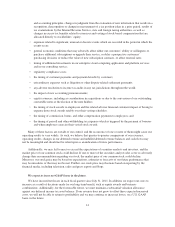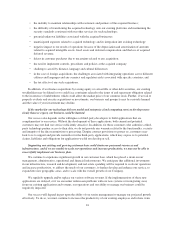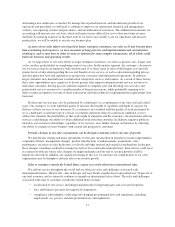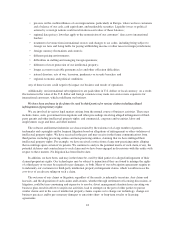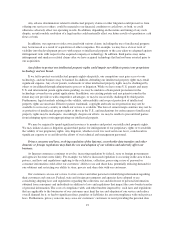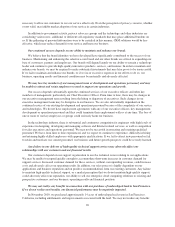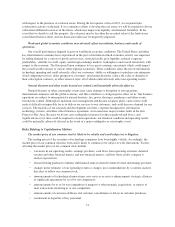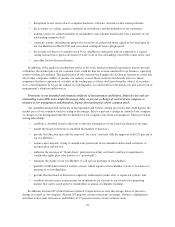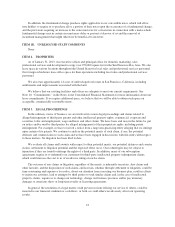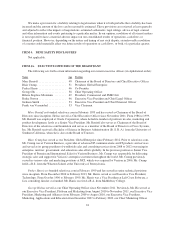Salesforce.com 2013 Annual Report Download - page 19
Download and view the complete annual report
Please find page 19 of the 2013 Salesforce.com annual report below. You can navigate through the pages in the report by either clicking on the pages listed below, or by using the keyword search tool below to find specific information within the annual report.The market in which we participate is intensely competitive, and if we do not compete effectively, our
operating results could be harmed.
The market for enterprise applications and platform services is highly competitive, rapidly evolving and
fragmented, and subject to changing technology, shifting customer needs and frequent introductions of new
products and services. We compete primarily with vendors of packaged CRM software and companies offering
on-demand CRM applications. We also compete with internally developed applications and face competition
from enterprise software vendors and online service providers who may develop toolsets and products that allow
customers to build new applications that run on the customers’ current infrastructure or as hosted services. Our
current competitors include:
• enterprise software application vendors;
• cloud computing application service providers;
• software companies that provide their product or service free of charge, and only charge a premium for
advanced features and functionality;
• traditional platform development environment companies; and
• cloud computing development platform companies.
Many of our current and potential competitors enjoy substantial competitive advantages, such as greater
name recognition, longer operating histories and larger marketing budgets, as well as substantially greater
financial, technical and other resources. In addition, many of our current and potential competitors have
established marketing relationships and access to larger customer bases, and have major distribution agreements
with consultants, system integrators and resellers.
As a result, our competitors may be able to respond more quickly and effectively than we can to new or
changing opportunities, technologies, standards or customer requirements. Furthermore, because of these
advantages, even if our service is more effective than the products that our competitors offer, potential customers
might accept competitive products and services in lieu of purchasing our service. For all of these reasons, we
may not be able to compete successfully against our current and future competitors.
As we acquire companies or technologies, we may not realize the expected business benefits, the
acquisitions could prove difficult to integrate, disrupt our business, dilute stockholder value and adversely
affect our operating results and the value of your investment.
As part of our business strategy, we periodically make investments in, or acquisitions of, complementary
businesses, joint ventures, services and technologies and intellectual property rights, and we expect that we will
continue to make such investments and acquisitions in the future. Acquisitions and investments involve
numerous risks, including:
• the potential failure to achieve the expected benefits of the combination or acquisition;
• difficulties in and the cost of integrating operations, technologies, services and personnel;
• diversion of financial and managerial resources from existing operations;
• risk of entering new markets in which we have little or no experience or where competitors may have
stronger market positions;
• potential write-offs of acquired assets or investments, and potential financial and credit risks associated
with acquired customers;
• potential loss of key employees;
• inability to generate sufficient revenue to offset acquisition or investment costs;
15


